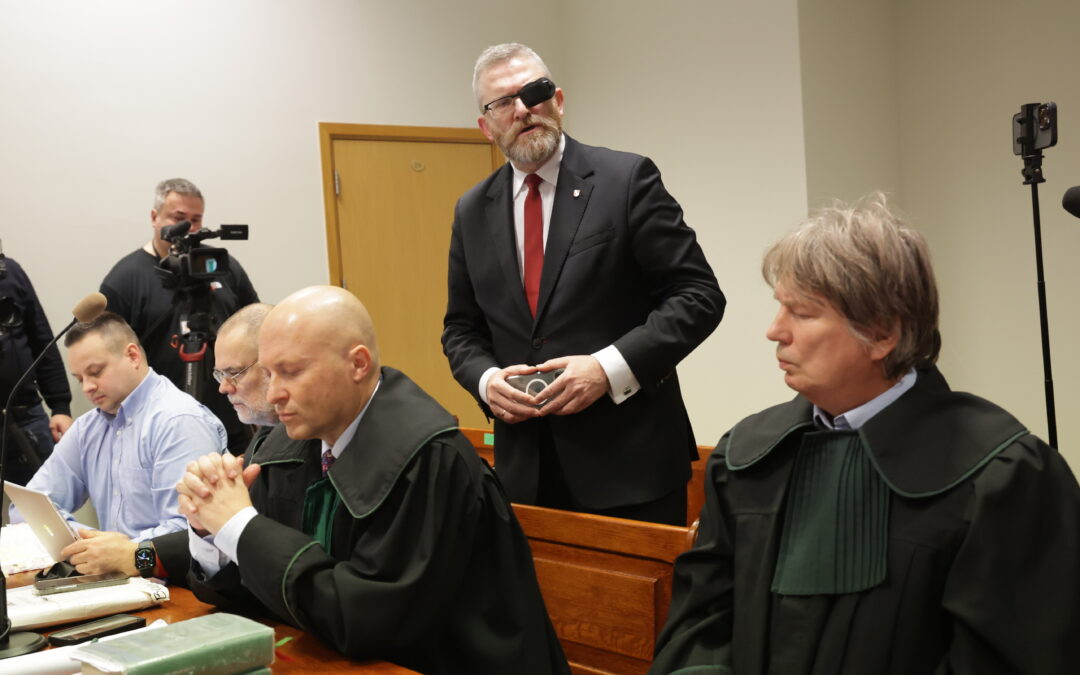By Aleksandra Janiszewska-Cardone
Magdalena Abakanowicz has become one of the most recognised Polish artists in the world, a status highlighted by a new exhibition devoted to her at the Tate Modern in London. Every Tangle of Thread and Rope launched last month and will remain open until 21 May 2023.
The name of the exhibition refers to a form of art pioneered by the late Abakanowicz, and which indeed has taken her name: “Abakans” are enormous textile forms that continue to fascinate today, unsettling with their scale, organic character, and the way they are exhibited – suspended from the ceiling.
'I like the surface of threads that I make. Every square inch differs from the next, as in the creations of nature.' – #MagdalenaAbakanowicz
Next month, a major exhibition of Abakanowicz's extraordinary textile works opens at Tate Modern. Find out more ➡️ https://t.co/9ycnb92D0v pic.twitter.com/L28k80b7TS
— Tate (@Tate) October 15, 2022
The artist herself described them as “a kind of bridge between me and the outside world. I could surround myself with them; I could create an atmosphere in which I somehow felt safe because they were my world.”
Abakanowicz’s work has attracted interest not only in the world of exhibitions, but also on the art market. “She was the first artist in Poland whose work crossed the 10 million zloty threshold,” notes Roman Kaczkowski, an expert in the field.
In October 2021, her Crowd III (1989), featuring 50 figures, was sold for 13.2 million zloty (€2.82 million). This record was broken just two months later when another of her works, Bambini (1998-99), fetched 13.6 million zloty at auction.
“The boundless mysteries of soft life”
Born in 1930 into an aristocratic family, Abakanowicz spent her childhood in the forests and fields of her family estate. In her recollections from this period, experiences of communing with nature recur, with its organicity and her first reflections on the fragility of life.
The young Magdalena observed tadpoles swimming in the pond with their swollen stomachs filled with a tangle of guts, and their bodies – carelessly poked with a stick – bursting open.
“I sat there with a pounding heart, shaken by what had taken place,” she recalled. “By this destruction of a soft life, and by the boundless mystery of its ‘soft’ contents.”
Nature was for her a place of refuge from her frosty life and her mother’s disappointment at having two daughters rather than the son she longed for.
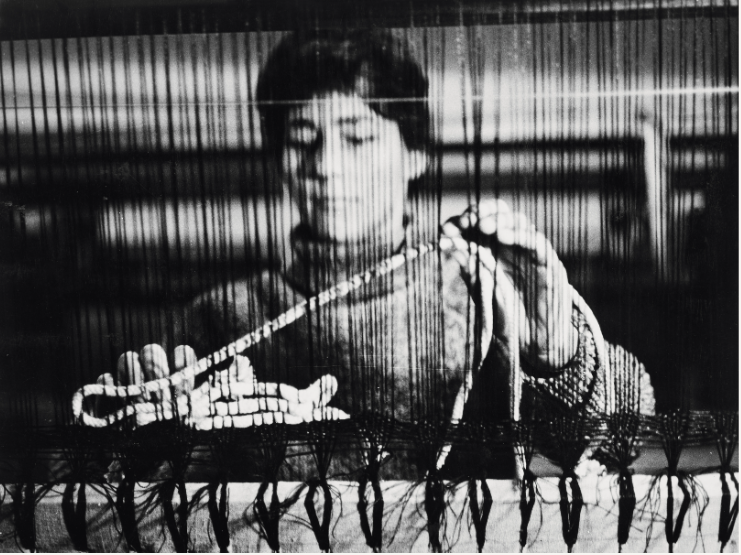
Abakanowicz in 1966 (© estate of Marek Holzman)
In her early teenage years, Abakanowicz witnessed the horrors of war: the image of her mother having been shot, her arm severed by gunfire, would stay with her in her later work.
The reality of postwar, communist Poland did not bring respite: Abakanowicz’s family had their land taken away and she was forced to conceal her aristocratic origins.
The young artist was disillusioned by studies at Warsaw’s Academy of Fine Arts, whose programme followed the binding socialist realist doctrine and was subordinated to party propaganda. She sought freedom of expression in abstraction taking biological forms, which she pursued in both painting and textile work.
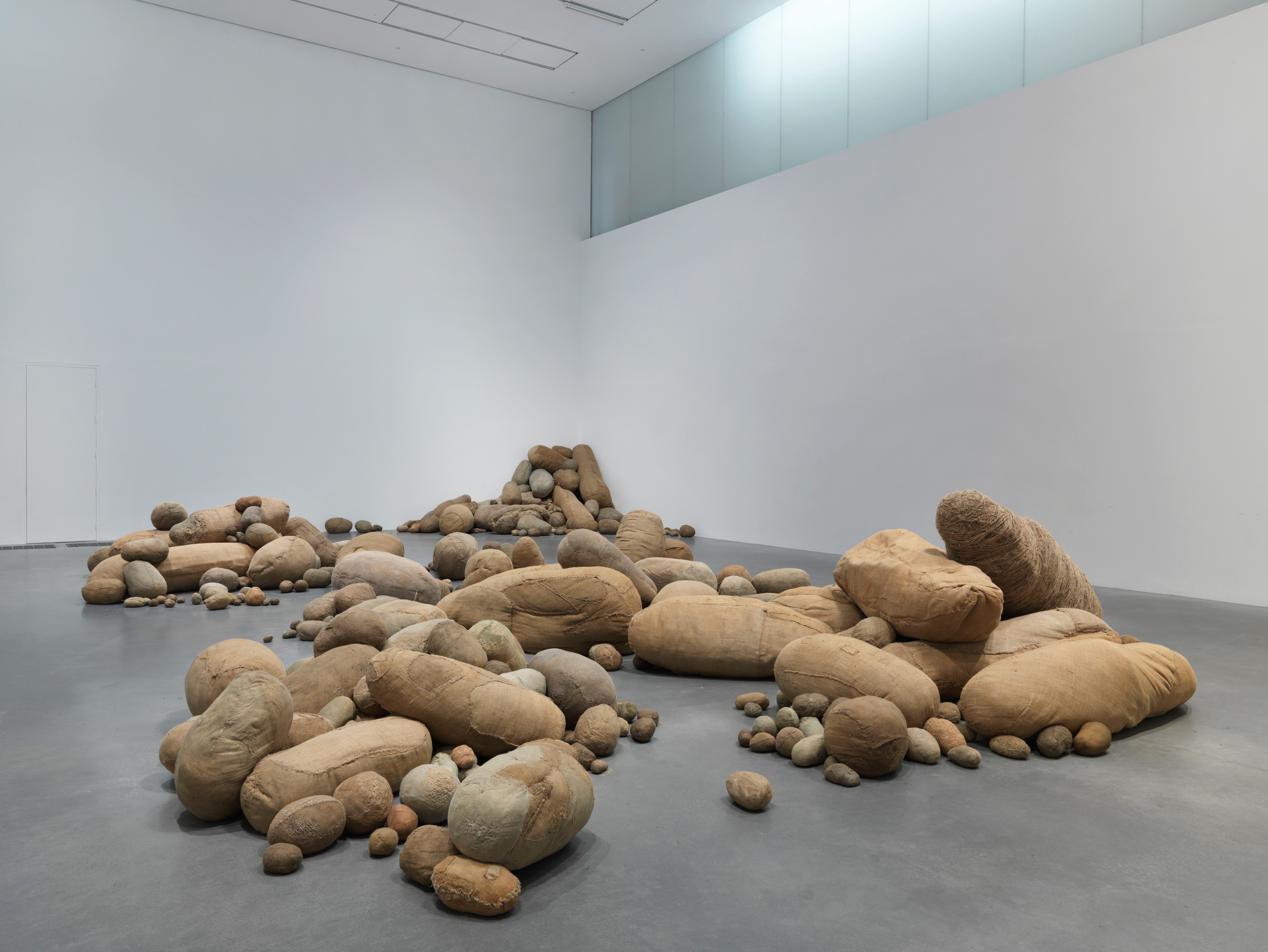
Magdalena Abakanowicz, Embryology, 1978–80 (photo: Tate Modern)
The creative process and the materials the artist used were consciously selected for her objective. “After many years, soft things of complicated tissue have become my material,” Abakanowicz said. “I feel a kinship with the world which I do not want to know but through touching, feeling and relating to the part of myself which I carry deep inside me.”
“There is no tool between me and the material I use. I choose it with my hands. I shape it with my hands. My hands transmit my energy to it. By translating an idea into a shape, they will always pass on something escaping conceptualisation. They will reveal the unconscious.”
This touch, warmth, and immediate contact were crucial for her in the creative process. Working with typical sculpting materials – marble, wood or metal – would not have been able to give her this immediacy of contact.
The choice of textiles was also a subversive allusion to the division in art into the masculine and feminine – according to traditional categories, the high genres taught in the academies were reserved for men, while women did “domestic jobs” such as embroidery, weaving and sewing to satisfy everyday needs.
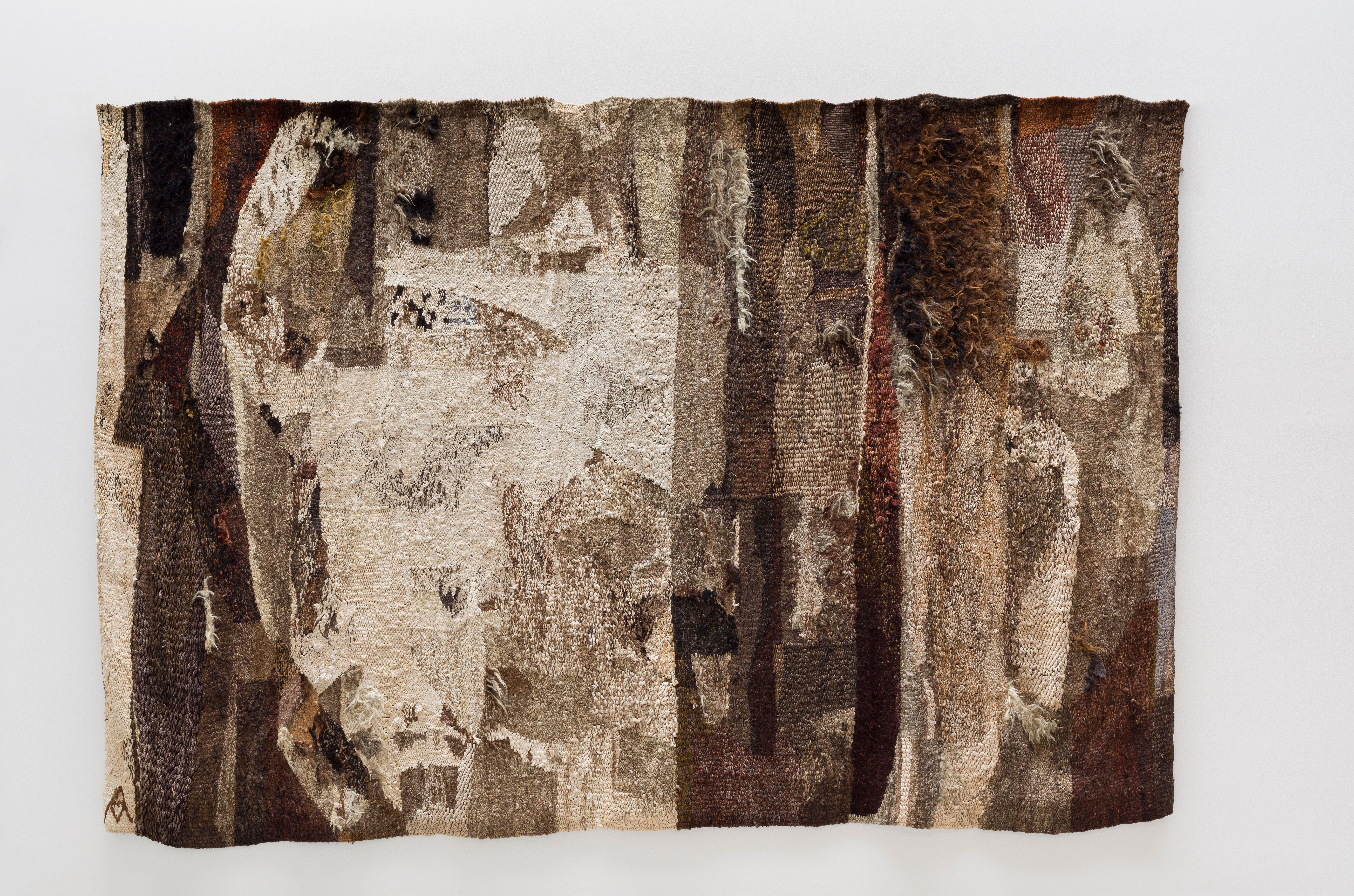
Magdalena Abakanowicz, Helena I, 1964-5 (photo: Tate Modern)
In Abakanowicz’s large-format works, this aspect of domesticity is an utterly alien concept. They cause surprise and a certain discomfort in the spectator, dazzling with their vastness.
It was this thinking in 1960 that gave rise to Abakans: massive woven forms hanging from the ceiling. With this gesture, Abakanowicz broke with the entire previous tradition of thinking about textiles as an artistic material.
The Abakans soon brought her global renown, confirmed with awards at the Lausanne International Tapestry Biennial and a gold medal at the São Paulo Art Biennial in 1965.
“The Abakans irritated. They were untimely,” the sculptor would herself admit years later. “There was the French tapestry in weaving, pop-art and conceptual art, and here there were some complicated, huge, magical (forms).”
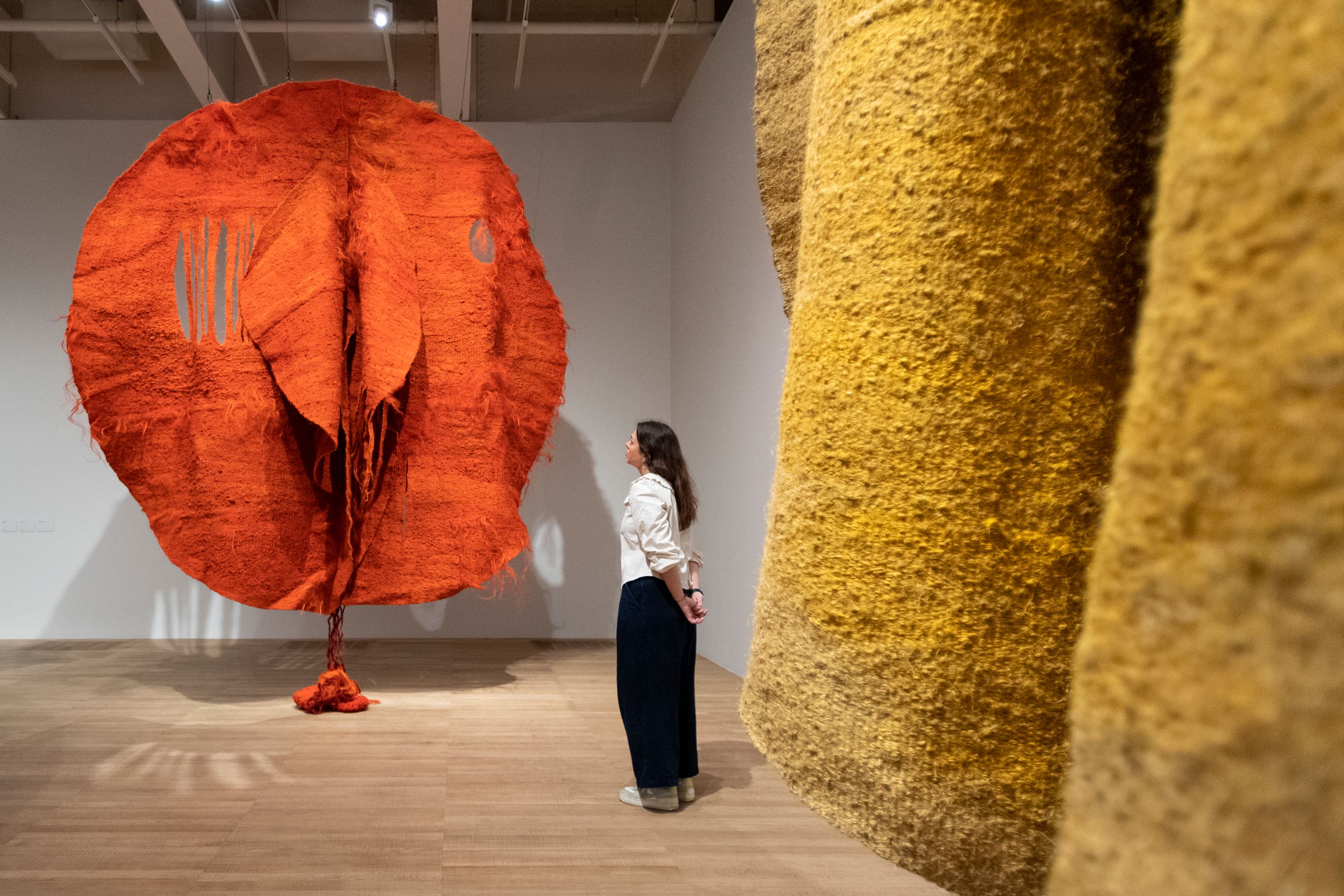
Every Tangle Of Thread And Rope exhibition (photo: Tate Modern)
By the early 1970s, however, the human figure began to appear in her works. As Abakanowicz explained, this change was a result of experiments with Abakans – the format of the sculptures in textile made them difficult to duplicate in order to create a series of identical objects.
Human forms
Whereas previously the artist had divided the person into tissues, muscles and fibres, the appearance of human figures merged together all these components of her previous works. Projects based on multiplication of forms ensued, such as Heads, Backs, Sitting Figures, and Crowd I. In these forms reflecting the body – usually in fragments – a remarkable sensitivity to human experience can be discerned.
“When examining man, I am in fact examining myself,” Abakanowicz said of the creative process. “My forms are the skins I strip off myself one by one, marking the milestones along my road. Each time they belong so much to me and I belong to them so that we cannot exist without one another.”
“Soft, they contain an infinite number of possible shapes of which only one can be selected by myself as the right, meaningful one. I create space for them in exhibition rooms where they radiate the energy I have given them. They exist with me, they depend on me, I depend on them…Without me they make no sense, like discarded body parts separated from the torso.”
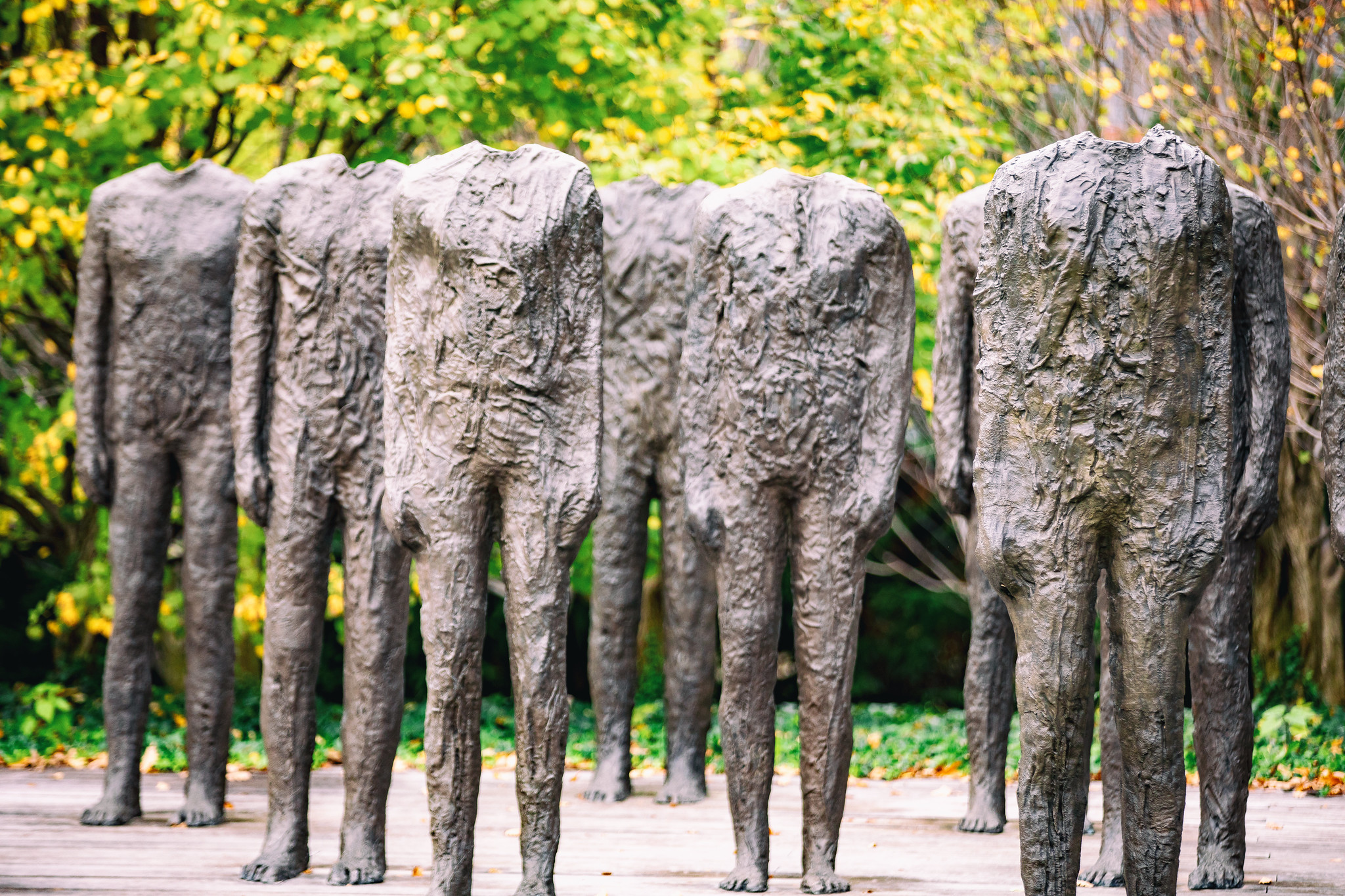
Magdalena Abakanowicz, Standing Figures (Thirty Figures), 1994-98, at the Nelson-Atkins Museum of Art Kansas City, United States (photo: Thomas Hawk/Flickr, under CC BY-NC 2.0)
In her later work, especially pieces meant for exhibition outside the gallery space, Abakanowicz opted for “traditional” sculpting materials like bronze, stone, wood and cast iron.
One example is her 1986 installation Katharsis for the Giuliano Gori Foundation in Florence, comprising 33 cast bronze human figures, each of them almost three metres tall. Her intention was to portray “man’s horrible powerlessness against his biological structure”, she explained.
The artist’s works made from these more durable materials can be found around the world, and mainly in the United States. Yet the largest piece of this type – a group of 112 cast-iron figures titled Unrecognised from 2002 – is located in the Cytadela park in Poznań.
Poland is also home to the first object placed permanently in a non-gallery space – in Elbląg one can find a steel form made during the first Biennial of Spatial Forms in 1965.
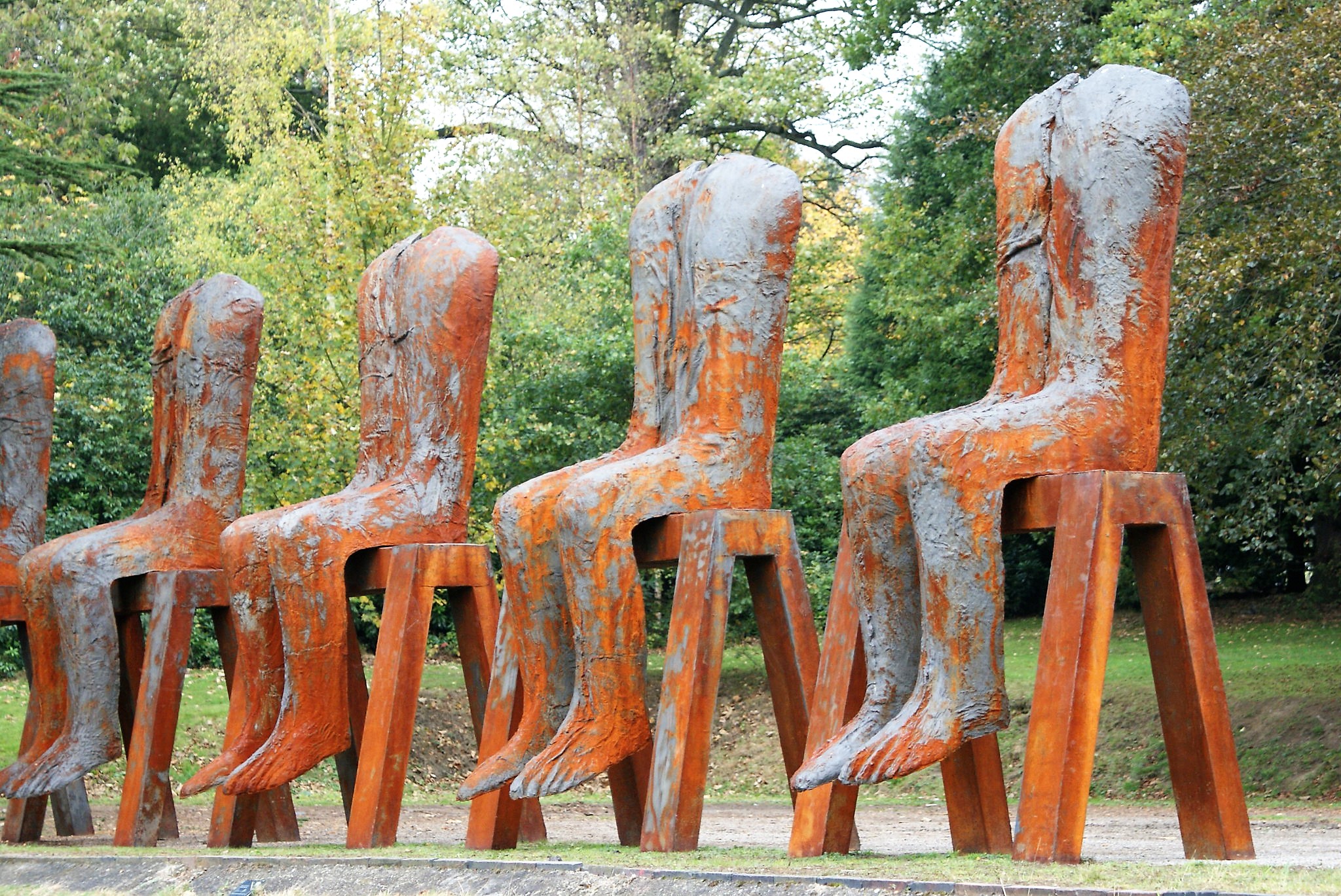
Magdalena Abakanowicz, Ten Seated Figures, 2011
Dialogue with the world
Abakanowicz was a citizen of the world, and this amid the realities of communist Poland, when travel was extremely difficult. Sometimes even a few hours before departure, she was unsure whether she would get a passport.
“With my exhibitions around the world, I wanted to make people aware that my captive country still has a high level of old culture contributing to world heritage, and is at the same time able to speak about the recent reality with the very personal strong voice of modern art,” she said. “I travelled probably more than any other artist. So important was the dialogue with the world.”
A year after Abakanowicz’s death, in 2018, the Marlborough Gallery in Manhattan prepared an exhibition of her works, the first such comprehensive presentation of the Polish artist’s oeuvre in New York.
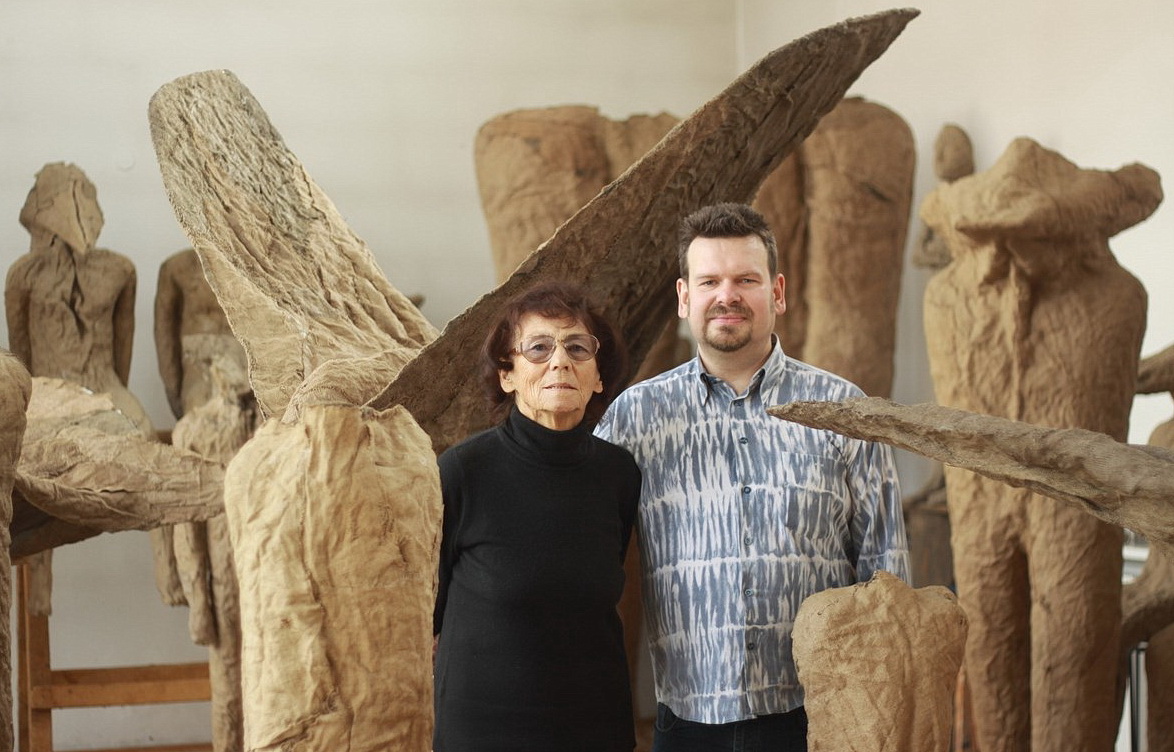
Abakanowicz and Jaroslaw Pijarowski, another Polish artist, in 2010 (photo: Kontrola/Wikimedia Commons, under CC-BY-SA 4.0)
Visitors to the Every Tangle of Thread and Rope exhibition can now admire 26 spatial objects produced between the mid-1950s and late 1980s made from organic materials such as horse hair, sisal (agava fibre) and hemp rope.
The idea of the exhibition is to present the most important phenomenon that revolutionised not only Abakanowicz’s work but also contemporary thinking about textiles as an artistic material.
As the organisers of the project say, the “forest of towering woven sculptures” that viewers must walk around, look at from various distances, and smell, allows them to see for themselves the process of transition of forms from two-dimensional textiles to three-dimensional sculpture.
Tate Modern invites visitors to immerse themselves in these forms just as the artist planned, to feel their majestic effect on all the senses.
Translated by Ben Koschalka.


